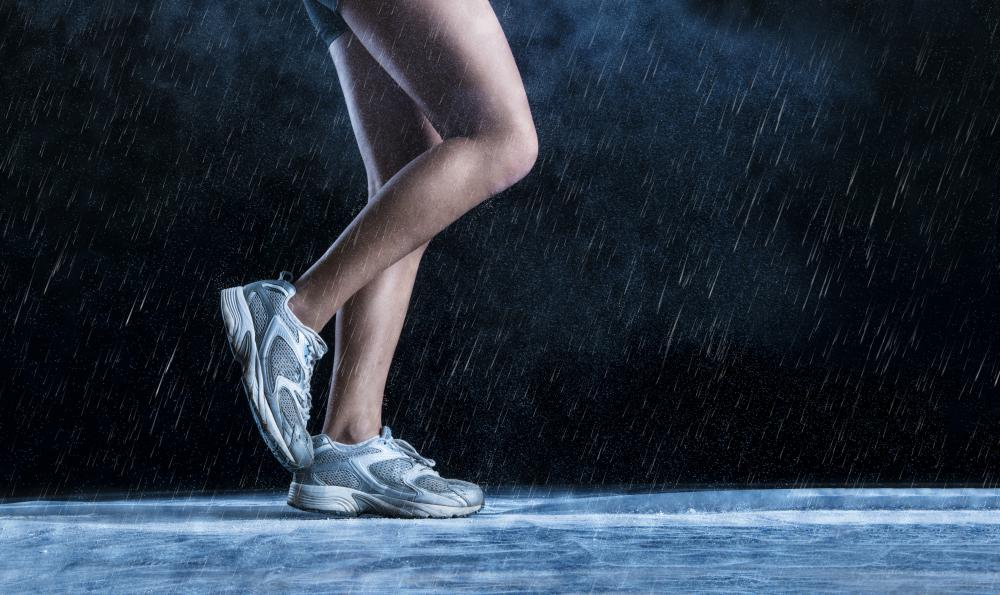At WiseGEEK, we're committed to delivering accurate, trustworthy information. Our expert-authored content is rigorously fact-checked and sourced from credible authorities. Discover how we uphold the highest standards in providing you with reliable knowledge.
What are Different Types of Running Knee Injuries?
Running knee injuries may affect muscles, tendons, ligaments, or cartilage. They can be caused by over training, muscle weakness or tightness, or poor running form, among other things. Some of the most common types of running knee injuries include runner's knee, iliotibial band syndrome, baker's cysts, and osteoarthritis.
Patellofemoral pain syndrome (PFPS) is one of the most common running knee injuries — so much so that it is known as runner's knee. This pain around the kneecap is caused by irritation of the groove where the kneecap rests on the thighbone. Though the normal stresses of running long distances can bring on the pain of runner's knee, it is more often due to tight hamstrings and calves, weak quads, worn cartilage, or high or flat arches on the feet. Wearing appropriate shoes for a particular foot type, performing stretching and strengthening exercises, and increasing distance gradually can help to prevent runner's knee. A runner who incurs PFPS can continue running, but should decrease mileage, avoid hills, and ice the affected knee after a run.

Iliotibial band syndrome (ITBS) refers to inflammation of the iliotibial (IT) band, a muscle that runs from the buttocks to the knee along the outside of the thigh. This muscle may become tight due to lack of stretching or ill-fitting shoes, or simply from too much running, especially downhill running. Prevention measures for ITBS include stretching and strengthening exercises and wearing appropriate shoes. Runners suffering from ITBS should cut back on mileage, avoid hills, take an anti-inflammatory drug before running, and stretch and ice after running. If symptoms do not improve after two to three weeks, a runner should stop running and seek medical advice.

Osteoarthritis, or degenerative arthritis, is the wearing down of joint cartilage. It is a chronic condition that tends to worsen as a person ages, but the pain due to osteoarthritis may appear sporadically, depending on the severity of the condition. An achy, swollen knee may indicate osteoarthritis rather than other running knee injuries. The symptoms can be alleviated by wearing a knee brace, performing strengthening exercises that focus on the muscles around the knee, and taking nutritional supplements for joints. A runner experiencing pain from osteoarthritis should run shorter distances at a moderate pace.

Baker's cysts occur behind the knee at the joint. Also called popliteal cysts, they are fluid-filled bumps that can cause swelling and tightness. Runners and tennis players are the most common sufferers of baker's cysts. There is usually an underlying problem if a baker's cyst is present, such as a cartilage tear or arthritis. The cyst should be removed by an orthopedist, and the underlying problem should be treated as well.
AS FEATURED ON:
AS FEATURED ON:


















Discuss this Article
Post your comments